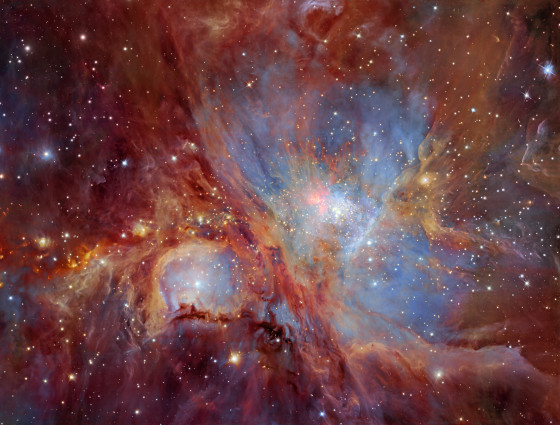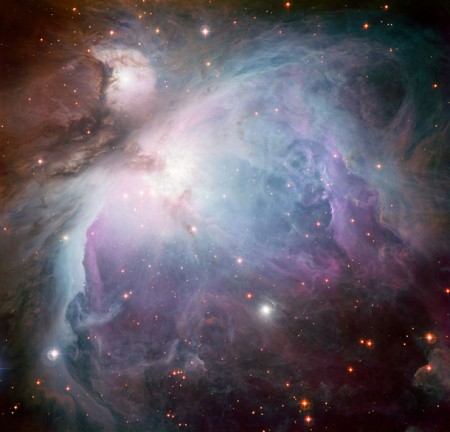#August2016
Space Swoon: Orion Nebula as captured by the Very Large Telescope
No, seriously. It’s called the Very Large Telescope, and it is responsible for one of the largest and deepest pictures of the nebula ever taken.
High-Res Shot Of Orion Nebula. Daily Space Porn.
Enlarge. | Super-High Res [142 Mb]. | Via.
Behold!, the Orion Nebula. If you haven’t clicked for the larger version, go, do it! The definition is ridiculous, no? This picture is staggering. As usual, Phil Plait at Bad Astronomy breaks down exactly what we’re looking at:
The nebula is a vast cloud of gas, both atomic and molecular, and dust located about 1350 light years away. It’s one of the largest star forming factories in the Milky Way, and what you see here is well over 20 light years across.
For years I figured it was just a diffuse glowing thing in space, but it turns out to be more complicated than that. In reality, a lot of the nebula is actually a dark, dense molecular cloud – literally, composed of molecules like H2 (molecular hydrogen) and CO (carbon monoxide). This cloud is actually far, far larger than what you see in this image, perhaps 20 times the width! But it’s dark, so we don’t see it in visible light… and what we’re seeing in this picture is not really a free-floating gas cloud, but a cavity in the wall of the denser dark cloud.
Stars are being born inside that cloud. Some of them are very massive, hot, and bright. They blast out a fierce stellar wind, like the solar wind but far more powerful. They also emit a fierce flood of ultraviolet photons. Together, these two forces erode away at the material of the cloud, breaking apart the molecules into their constituent atoms, ionizing them, and causing them to glow. It so happens that some of these stars were born near the side of this cloud, so when they ate away the insides of the cloud it caused a blister in the side which burst open.
You can actually see that in this image! The bulk of the colorful nebula, from the upper left on down, is actually gas inside this cavity set aglow. The far wall is opaque and dark, so you don’t see it here. But you can get a sense of the bubble-like nature of the nebula.
Outstanding. There’s your existential nausea for the day.






